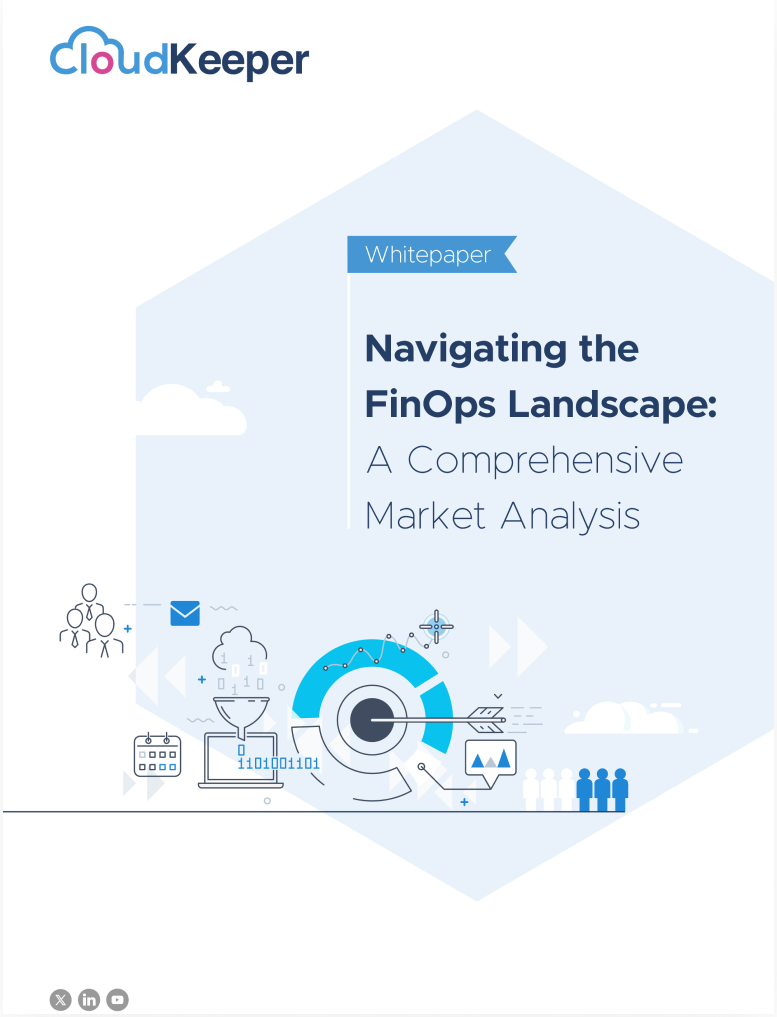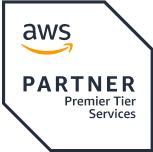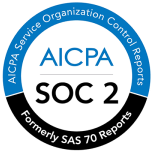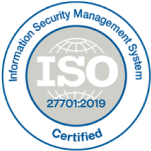It should come as no surprise that AWS provides scalable, dependable, and reasonably priced infrastructure to over 190 nations, since it holds a 32 percent global market share in the public cloud. Amazon EC2 is one of its most potent and widely utilized services (Elastic Cloud Compute). Amazon Elastic Compute Cloud (EC2) stands tall as one of the core services within Amazon Web Services (AWS), offering scalable compute capacity in the cloud. Its popularity stems from the flexibility it provides for businesses of all sizes to run applications in the cloud without upfront investments in hardware. Here are a few other reasons why several organizations around the world prefer running their workloads on EC2-
- No hardware units are needed.
- Easily expandable (up or down) and just charged for the resources used.
- You are in total command.
- Incredibly secure.
- Your assets are accessible to you from anywhere in the globe.
Understanding EC2 pricing models is pivotal for effective AWS cost optimization. Amidst the dynamic cloud landscape, mastering EC2 cost optimization strategies becomes imperative. EC2 cost optimization involves navigating varied pricing models, from On-Demand to Reserved and Spot Instances. In this guide, we delve into five strategies designed to maximize cloud savings through optimized EC2 usage, along with the various pricing models available for them. These strategies not only streamline resource allocation but also leverage pricing models efficiently, ensuring businesses harness the full potential of AWS EC2 while ensuring AWS cost optimization.
Pricing models for AWS EC2 Instances
- Free Tier: Amazon EC2 offers a limited free tier for new users, allowing them to use a certain level of resources free for up to 12 months. This includes a range of instance types, such as T2 micro instances, T3, M5, and R5, etc. to experiment with and get familiar with the platform. It allows individuals or businesses to figure out various configurations, from smaller instances suited for basic computing tasks to more robust ones designed for high-performance applications. For instance, users can test micro instances for lightweight workloads or explore larger instance types to comprehend the platform's capabilities.
- On-Demand Instances: Users pay for compute capacity by the hour or second without any long-term commitments. This model offers flexibility and scalability, allowing users to start and stop instances as needed, paying only for the resources used.
- Spot Instances: These allow users to bid for spare EC2 capacity at significantly lower prices than On-Demand instances. However, they can be interrupted and terminated by AWS based on demand, making them ideal for fault-tolerant, flexible workloads or batch processing.
- Reserved Instances (RIs): RIs provide significant cost savings (up to 75%) compared to On-Demand pricing, suitable for steady and predictable workloads. They offer capacity reservation for a specific instance type in a particular region for a term of one or three years.
- Savings Plans: Offering flexibility across multiple AWS services, Savings Plans allow users to commit to a consistent amount of usage measured in dollars per hour over a term. This model provides significant discounts in exchange for the commitment to usage, offering cost predictability and flexibility across various services.
However, ensuring cost efficiency within an EC2 environment requires strategic optimization. Let’s delve into five effective strategies to maximize savings without compromising performance.
EC2 Cost Optimization Strategies
1. Right size Your EC2 Instances
One of the most impactful ways for EC2 cost optimization is rightsizing your instances. AWS offers a wide range of instance types, each with varying compute, memory, and storage capacities. Often, instances might be provisioned with more resources than necessary, leading to inflated costs. By analyzing your workload’s actual resource usage, you can match instances more precisely to your requirements, thereby ensuring AWS cost optimization while maintaining optimal performance.
For example, a workload initially provisioned on a larger instance, like an M5 instance (which has high compute and memory), might, in reality, only require the memory capacity of an R5 instance. By switching to the R5 instance type, a significant EC2 cost optimization can be achieved while maintaining the necessary performance levels.
2. Utilize AWS Auto Scaling
Auto Scaling is a powerful tool that automatically adjusts the number of EC2 instances in response to demand. By dynamically scaling up or down based on traffic patterns or workload variations, you can ensure EC2 cost optimization by checking for the right amount of capacity at any given time. This prevents over-provisioning during low-traffic periods and avoids unnecessary expenses.
Auto Scaling ensures the right number of instances are active, preventing over-provisioning. Companies like Netflix reportedly saved significantly in costs using Auto Scaling.
- Performance vs. Consumption Targets: Netflix learned that basing Auto Scaling targets solely on consumption can lead to pitfalls. Regularly tracking both performance and consumption is vital to determine the appropriate approach.
- Changing Targets Over Time: As software performance evolves, consumption targets can fluctuate. Continuous tracking is crucial to identify inefficiencies early on.
- Live Traffic Testing: Netflix gains confidence in Auto Scaling by conducting live traffic tests, emphasizing the necessity for real-world performance assurance over test environments.
- Non-linear Consumption Consideration: Understanding performance fluctuations during peak and non-busy periods is crucial. Netflix's experience highlights the need to comprehend non-linear consumption behavior for effective Auto Scaling.
3. Take Advantage of Reserved Instances (RIs)
AWS Reserved Instances offer significant cost savings compared to On-Demand instances. By committing to a specific instance configuration for a term of one or three years, you can enjoy substantial discounts, up to 75%, compared to the On-Demand pricing. RIs provide cost predictability and are ideal for workloads with steady and predictable usage patterns. Additionally, AWS offers convertible RIs, allowing flexibility to change instance families, sizes, or operating systems, providing further AWS cost optimization options.
Committing to RIs for predictable workloads yields substantial savings. A company running a database 24/7 can benefit from RIs, ensuring AWS cost optimization. For example, Netflix reported saving millions by committing to RIs for its streaming services. (source: AWS)
4. Implement AWS Spot Instances and Savings Plans
AWS Spot Instances enable you to bid for unused EC2 capacity at significantly lower prices than On-Demand instances. Although these instances can be interrupted by AWS with short notice, they are an excellent option for fault-tolerant workloads, batch processing, or testing environments, delivering substantial savings. Savings Plans, on the other hand, provide flexibility across EC2 and other AWS services, offering significant discounts in exchange for committing to a consistent amount of usage (measured in $/hour) over a term.
Companies like Lyft have used Spot Instances for cost-effective batch processing, reducing costs as compared to On-Demand instances. Upon experimenting with On-Demand Instances for simulations, Lyft's Level 5 team swiftly identified an opportunity for heightened efficiency and cost reduction. Transitioning to Amazon EC2 Spot Instances became pivotal, with over 90 percent of simulations now utilizing this resource, including Amazon EC2 P3 Instances equipped with NVIDIA V100 Tensor Core GPUs. This shift allows Lyft to leverage untapped AWS Cloud capacity, offering up to a 70 percent discount compared to On-Demand pricing. (source: AWS)
5. Leverage AWS Cost Explorer and Trusted Advisor
AWS provides tools like Cost Explorer and Trusted Advisor to gain insights into your AWS spending and to identify potential cost-saving opportunities ensuring AWS cost optimization. Cost Explorer offers visualization and analysis of your AWS spending patterns, enabling effective forecasting and cloud cost tracking. Trusted Advisor, a part of AWS Premium Support, offers personalized AWS cost optimization recommendations based on your usage patterns and helps in identifying underutilized resources or opportunities to save through RI utilization.
Companies like Airbnb have reported optimizing costs by 20% using Cost Explorer insights. Airbnb harnessed AWS tools like the Cost & Usage Report for cost transparency, and optimized expenses via Amazon S3 Intelligent-Tiering and Savings Plans, fostering sustainable growth. Using the AWS Cost & Usage Report within its data warehouse, Airbnb crafts a tailored pipeline, generating a live overview of cost specifics and enabling comprehensive analytics. This pipeline integrates Amazon S3, renowned for its scalability, security, and high-performance data storage, ingesting and managing cost and usage files seamlessly. (source: AWS)
Maximize RI savings with CloudKeeper Auto
The versatility and cost-effectiveness of AWS EC2 make it a go-to choice for businesses globally. From dissecting diverse pricing models like free tier, on-demand, spot instances, and reserved Instances, to strategic optimization tactics such as rightsizing instances, auto-scaling, and capitalizing on flexible plans like savings plans, we talked about the path to cost efficiency. The emphasis on adaptability, precision in resource allocation, and harnessing cloud cost optimization tools underscores the importance of informed decision-making. Ultimately, mastering EC2 cost optimization and AWS cost optimization isn't just about savings; it's about maximizing performance and value within the AWS ecosystem.
CloudKeeper Auto, a zero-touch AI-based platform for RI management, ensures effortless EC2 cost optimization and AWS cost optimization without additional costs. It automates reserved instance management, tailoring purchases to infrastructure demands, and providing on-demand EC2 resources at 3-year RI pricing. With a buy-back guarantee for unused RIs, there is risk-free coverage. Beyond handling RIs, it provides complimentary access to CloudKeeper Lens, offering cloud cost visibility and recommendations. On top of that, it extends Cloud FinOps Support and consulting, elevating your entire cloud strategy. With CloudKeeper Auto, it's not just about reserved instance management, it's about optimizing your cloud ecosystem for maximum efficiency and savings. Sign up for a free demo today.









